EN ISO 14971:2019
(Main)Medical devices - Application of risk management to medical devices (ISO 14971:2019)
Medical devices - Application of risk management to medical devices (ISO 14971:2019)
This document specifies terminology, principles and a process for risk management of medical devices, including software as a medical device and in vitro diagnostic medical devices. The process described in this document intends to assist manufacturers of medical devices to identify the hazards associated with the medical device, to estimate and evaluate the associated risks, to control these risks, and to monitor the effectiveness of the controls.
The requirements of this document are applicable to all phases of the life cycle of a medical device. The process described in this document applies to risks associated with a medical device, such as risks related to biocompatibility, data and systems security, electricity, moving parts, radiation, and usability.
The process described in this document can also be applied to products that are not necessarily medical devices in some jurisdictions and can also be used by others involved in the medical device life cycle.
This document does not apply to:
— decisions on the use of a medical device in the context of any particular clinical procedure; or
— business risk management.
This document requires manufacturers to establish objective criteria for risk acceptability but does not specify acceptable risk levels.
Risk management can be an integral part of a quality management system. However, this document does not require the manufacturer to have a quality management system in place.
NOTE Guidance on the application of this document can be found in ISO/TR 24971[9].
Medizinprodukte - Anwendung des Risikomanagements auf Medizinprodukte (ISO 14971:2019)
Dispositifs médicaux - Application de la gestion des risques aux dispositifs médicaux (ISO 14971:2019)
Le présent document spécifie la terminologie, les principes et un processus de gestion des risques relatifs aux dispositifs médicaux, y compris les logiciels utilisés en tant que dispositifs médicaux et les dispositifs médicaux de diagnostic in vitro. Le processus décrit dans le présent document vise à aider les fabricants de dispositifs médicaux à identifier les dangers associés au dispositif médical, à estimer et évaluer les risques correspondants, à maîtriser ces risques et à surveiller l'efficacité des moyens de maîtrise.
Les exigences du présent document s'appliquent à tous les stades du cycle de vie d'un dispositif médical. Le processus décrit dans le présent document s'applique aux risques associés à un dispositif médical, tels que les risques concernant la biocompatibilité, la sécurité des données et des systèmes, l'électricité, les parties en mouvement, le rayonnement et l'aptitude à l'utilisation.
Le processus décrit dans le présent document peut aussi s'appliquer aux produits qui ne sont pas nécessairement des dispositifs médicaux dans certaines juridictions et peut être utilisé par d'autres personnes impliquées dans le cycle de vie de dispositifs médicaux.
Le présent document ne s'applique pas à ce qui suit:
— les décisions relatives à l'utilisation d'un dispositif médical au cours d'une procédure clinique particulière; ou
— la gestion des risques commerciaux.
Le présent document impose aux fabricants d'établir des critères objectifs d'acceptabilité des risques, mais ne spécifie pas de niveaux de risque acceptables.
La gestion des risques peut faire partie intégrante d'un système de management de la qualité. Cependant, le présent document n'exige pas du fabricant qu'il mette en place un système de management de la qualité.
NOTE Des recommandations relatives à l'application du présent document sont données dans l'ISO/TR 24971[9].
Medicinski pripomočki - Uporaba obvladovanja tveganja pri medicinskih pripomočkih (ISO 14971:2019)
General Information
Relations
Standards Content (Sample)
SLOVENSKI STANDARD
01-maj-2020
Nadomešča:
SIST EN ISO 14971:2012
Medicinski pripomočki - Uporaba obvladovanja tveganja pri medicinskih
pripomočkih (ISO 14971:2019)
Medical devices - Application of risk management to medical devices (ISO 14971:2019)
Medizinprodukte - Anwendung des Risikomanagements auf Medizinprodukte (ISO
14971:2019)
Dispositifs médicaux - Application de la gestion des risques aux dispositifs médicaux
(ISO 14971:2019)
Ta slovenski standard je istoveten z: EN ISO 14971:2019
ICS:
11.040.01 Medicinska oprema na Medical equipment in general
splošno
2003-01.Slovenski inštitut za standardizacijo. Razmnoževanje celote ali delov tega standarda ni dovoljeno.
EUROPEAN STANDARD
EN ISO 14971
NORME EUROPÉENNE
EUROPÄISCHE NORM
December 2019
ICS 11.040.01
Supersedes EN ISO 14971:2012
English version
Medical devices - Application of risk management to
medical devices (ISO 14971:2019)
Dispositifs médicaux - Application de la gestion des Medizinprodukte - Anwendung des
risques aux dispositifs médicaux (ISO 14971:2019) Risikomanagements auf Medizinprodukte (ISO
14971:2019)
This European Standard was approved by CEN on 5 August 2019.
CEN and CENELEC members are bound to comply with the CEN/CENELEC Internal Regulations which stipulate the conditions for
giving this European Standard the status of a national standard without any alteration. Up-to-date lists and bibliographical
references concerning such national standards may be obtained on application to the CEN-CENELEC Management Centre or to
any CEN and CENELEC member.
This European Standard exists in three official versions (English, French, German). A version in any other language made by
translation under the responsibility of a CEN and CENELEC member into its own language and notified to the CEN-CENELEC
Management Centre has the same status as the official versions.
CEN and CENELEC members are the national standards bodies and national electrotechnical committees of Austria, Belgium,
Bulgaria, Croatia, Cyprus, Czech Republic, Denmark, Estonia, Finland, France, Germany, Greece, Hungary, Iceland, Ireland, Italy,
Latvia, Lithuania, Luxembourg, Malta, Netherlands, Norway, Poland, Portugal, Republic of North Macedonia, Romania, Serbia,
Slovakia, Slovenia, Spain, Sweden, Switzerland, Turkey and United Kingdom.
CEN-CENELEC Management Centre:
Rue de la Science 23, B-1040 Brussels
© 2019 CEN/CENELEC All rights of exploitation in any form and by any means Ref. No. EN ISO 14971:2019 E
reserved worldwide for CEN national Members and for
CENELEC Members.
Contents Page
European foreword . 3
European foreword
This document (EN ISO 14971:2019) has been prepared by Technical Committee ISO/TC 210 "Quality
management and corresponding general aspects for medical devices" in collaboration with Technical
Committee CEN/CLC/JTC 3 “Quality management and corresponding general aspects for medical
devices” the secretariat of which is held by NEN.
This European Standard shall be given the status of a national standard, either by publication of an
identical text or by endorsement, at the latest by June 2020, and conflicting national standards shall be
withdrawn at the latest by June 2020.
Attention is drawn to the possibility that some of the elements of this document may be the subject of
patent rights. CEN shall not be held responsible for identifying any or all such patent rights.
This document supersedes EN ISO 14971:2012.
According to the CEN-CENELEC Internal Regulations, the national standards organizations of the
following countries are bound to implement this European Standard: Austria, Belgium, Bulgaria,
Croatia, Cyprus, Czech Republic, Denmark, Estonia, Finland, France, Germany, Greece, Hungary, Iceland,
Ireland, Italy, Latvia, Lithuania, Luxembourg, Malta, Netherlands, Norway, Poland, Portugal, Republic of
North Macedonia, Romania, Serbia, Slovakia, Slovenia, Spain, Sweden, Switzerland, Turkey and the
United Kingdom.
Endorsement notice
The text of ISO 14971:2019 has been approved by CEN as EN ISO 14971:2019 without any modification.
INTERNATIONAL ISO
STANDARD 14971
Third edition
2019-12
Medical devices — Application of risk
management to medical devices
Dispositifs médicaux — Application de la gestion des risques aux
dispositifs médicaux
Reference number
ISO 14971:2019(E)
©
ISO 2019
ISO 14971:2019(E)
© ISO 2019
All rights reserved. Unless otherwise specified, or required in the context of its implementation, no part of this publication may
be reproduced or utilized otherwise in any form or by any means, electronic or mechanical, including photocopying, or posting
on the internet or an intranet, without prior written permission. Permission can be requested from either ISO at the address
below or ISO’s member body in the country of the requester.
ISO copyright office
CP 401 • Ch. de Blandonnet 8
CH-1214 Vernier, Geneva
Phone: +41 22 749 01 11
Fax: +41 22 749 09 47
Email: copyright@iso.org
Website: www.iso.org
Published in Switzerland
ii © ISO 2019 – All rights reserved
ISO 14971:2019(E)
Contents Page
Foreword .iv
Introduction .vi
1 Scope . 1
2 Normative references . 1
3 Terms and definitions . 1
4 General requirements for risk management system . 7
4.1 Risk management process . 7
4.2 Management responsibilities . 8
4.3 Competence of personnel . 9
4.4 Risk management plan . 9
4.5 Risk management file .10
5 Risk analysis .10
5.1 Risk analysis process .10
5.2 Intended use and reasonably foreseeable misuse .10
5.3 Identification of characteristics related to safety .11
5.4 Identification of hazards and hazardous situations .11
5.5 Risk estimation .11
6 Risk evaluation .12
7 Risk control .12
7.1 Risk control option analysis .12
7.2 Implementation of risk control measures .13
7.3 Residual risk evaluation .13
7.4 Benefit-risk analysis .14
7.5 Risks arising from risk control measures .14
7.6 Completeness of risk control .14
8 Evaluation of overall residual risk .14
9 Risk management review .15
10 Production and post-production activities.15
10.1 General .15
10.2 Information collection .15
10.3 Information review .16
10.4 Actions .16
Annex A (informative) Rationale for requirements .17
Annex B (informative) Risk management process for medical devices .26
Annex C (informative) Fundamental risk concepts .30
Bibliography .36
ISO 14971:2019(E)
Foreword
ISO (the International Organization for Standardization) is a worldwide federation of national standards
bodies (ISO member bodies). The work of preparing International Standards is normally carried out
through ISO technical committees. Each member body interested in a subject for which a technical
committee has been established has the right to be represented on that committee. International
organizations, governmental and non-governmental, in liaison with ISO, also take part in the work.
ISO collaborates closely with the International Electrotechnical Commission (IEC) on all matters of
electrotechnical standardization.
The procedures used to develop this document and those intended for its further maintenance are
described in the ISO/IEC Directives, Part 1. In particular, the different approval criteria needed for the
different types of ISO documents should be noted. This document was drafted in accordance with the
editorial rules of the ISO/IEC Directives, Part 2 (see www .iso .org/ directives).
Attention is drawn to the possibility that some of the elements of this document may be the subject of
patent rights. ISO shall not be held responsible for identifying any or all such patent rights. Details of
any patent rights identified during the development of the document will be in the Introduction and/or
on the ISO list of patent declarations received (see www .iso .org/ patents).
Any trade name used in this document is information given for the convenience of users and does not
constitute an endorsement.
For an explanation of the voluntary nature of standards, the meaning of ISO specific terms and
expressions related to conformity assessment, as well as information about ISO's adherence to the
World Trade Organization (WTO) principles in the Technical Barriers to Trade (TBT) see w
...
SLOVENSKI SIST EN ISO 14971
STANDARD
maj 2020
Medicinski pripomočki – Uporaba obvladovanja tveganja pri medicinskih
pripomočkih (ISO 14971:2019)
Medical devices – Application of risk management to medical devices
(ISO 14971:2019)
Medizinprodukte – Anwendung des Risikomanagements auf Medizinprodukte
(ISO 14971:2019)
Dispositifs médicaux – Application de la gestion des risques aux dispositifs
médicaux (ISO 14971:2019)
Referenčna oznaka
ICS 11.040.01 SIST EN ISO 14971:2020 (sl)
Nadaljevanje na straneh II in od 1 do 43
2021-11. Slovenski inštitut za standardizacijo. Razmnoževanje celote ali delov tega standarda ni dovoljeno.
SIST EN ISO 14971 : 2020
NACIONALNI UVOD
Standard SIST EN ISO 14971 (sl), Medicinski pripomočki – Uporaba obvladovanja tveganja pri
medicinskih pripomočkih (ISO 14971:2019), 2020, ima status slovenskega standarda in je istoveten
evropskemu standardu EN ISO 14971 (en, de, fr), Medical devices – Application of risk management to
medical devices (ISO 14971:2019), 2019.
Ta standard nadomešča SIST EN ISO 14971:2012.
NACIONALNI PREDGOVOR
Evropski standard EN ISO 14971:2019 je pripravil tehnični odbor Evropskega komiteja za
standardizacijo CEN/CLC/TC 3 Vodenje kakovosti in ustrezni splošni vidiki medicinskih pripomočkov
(Quality management and corresponding general aspects for medical devices). Slovenski standard
besedila slovenskega prevoda v tem standardu je odločilen izvirni evropski standard v enem od treh
uradnih jezikov CEN. Slovensko izdajo standarda je pripravil tehnični odbor SIST/TC VAZ Varovanje
zdravja.
Odločitev za privzem tega standarda je dne 24. aprila 2020 sprejel SIST/TC VAZ Varovanje zdravja.
ZVEZA Z NACIONALNIMI STANDARDI
Ta dokument se ne sklicuje na druge standarde.
OSNOVA ZA IZDAJO STANDARDA
– privzem standarda EN ISO 14971:2019
PREDHODNA IZDAJA
– standard SIST EN ISO 14971:2012
OPOMBE
– Povsod, kjer se v besedilu standarda uporablja izraz “evropski standard”, v SIST EN ISO 14971:2020
to pomeni “slovenski standard”.
– Uvod in nacionalni predgovor nista sestavni del standarda.
– Ta nacionalni dokument je istoveten EN ISO 14971:2019 in je objavljen z dovoljenjem
Upravni center
CEN-CENELEC
Rue de la Science 23
B-1040 Bruselj
This national document is identical with EN ISO 14971:2019 and is published with the permission of
CEN-CENELEC
Management Centre
Rue de la Science 23
B-1040 Brussels
II
EVROPSKI STANDARD EN ISO 14971
EUROPEAN STANDARD
NORME EUROPÉENNE
december 2019
EUROPÄISCHE NORM
ICS 11.940.01 Nadomešča EN ISO 14971:2012
Slovenska izdaja
Medicinski pripomočki – Uporaba obvladovanja tveganja pri
medicinskih pripomočkih (ISO 14971:2019)
Medical devices – Application of Dispositifs médicaux – Application Medizinprodukte – Anwendung
risk management to medical de la gestion des risques aux des Risikomanagements auf
devices (ISO 14971:2019) dispositifs médicaux Medizinprodukte (ISO 14971:2019)
(ISO 14971:2019)
Ta evropski standard je CEN odobril 5. avgusta 2019.
Člani CEN in CENELEC morajo izpolnjevati določila notranjih predpisov CEN/CENELEC, s katerimi
je predpisano, da mora biti ta evropski standard brez kakršnih koli sprememb sprejet kot nacionalni
standard. Seznami najnovejših izdaj teh nacionalnih standardov in njihovi bibliografski podatki so
na voljo pri Upravnem centru CEN-CENELEC ali članih CEN in CENELEC.
Ta evropski standard obstaja v treh uradnih izdajah (angleški, francoski in nemški). Izdaje v drugih
jezikih, ki jih člani CEN in CENELEC na lastno odgovornost prevedejo in izdajo ter prijavijo pri
Upravnem centru CEN-CENELEC, veljajo kot uradne izdaje.
Člani CEN in CENELEC so nacionalni organi za standarde in nacionalni elektrotehniški odbori
Avstrije, Belgije, Bolgarije, Cipra, Češke republike, Danske, Estonije, Finske, Francije, Grčije,
Hrvaške, Irske, Islandije, Italije, Latvije, Litve, Luksemburga, Madžarske, Malte, Nemčije,
Nizozemske, Norveške, Poljske, Portugalske, Republike Severna Makedonija, Romunije,
Slovaške, Slovenije, Srbije, Španije, Švedske, Švice, Turčije in Združenega kraljestva.
CEN-CENELEC
Evropski komite za standardizacijo
European Committee for Standardization
Comité Européen de Normalisation
Europäisches Komitee für Normung
Upravni center CEN-CENELEC
Rue de la Science 23, B-1040 Bruselj
© 2019 CEN/CENELEC Lastnice avtorskih pravic so vse države članice CEN in Ref. št. EN ISO 14971:2019 E
CENELEC.
SIST EN ISO 14971 : 2020
VSEBINA Stran
Evropski predgovor . 3
Predgovor . 4
Uvod . 6
1 Področje uporabe . 8
2 Zveze s standardi . 8
3 Izrazi in definicije . 8
4 Splošne zahteve za sistem obvladovanja tveganja . 14
4.1 Proces obvladovanja tveganja . 14
4.2 Odgovornost vodstva . 15
4.3 Kompetentnost osebja . 16
4.4 Načrt obvladovanja tveganja . 16
4.5 Dokumentacija o obvladovanju tveganja . 17
5 Analiza tveganja . 17
5.1 Proces analize tveganja . 17
5.2 Predvidena uporaba in razumno predvidljiva napačna uporaba . 18
5.3 Identifikacija karakteristik v zvezi z varnostjo . 18
5.4 Identifikacija nevarnosti in nevarnih stanj . 18
5.5 Ocena tveganja . 19
6 Vrednotenje tveganja . 19
7 Nadzor tveganja . 19
7.1 Analiza možnosti nadzora tveganja . 19
7.2 Izvajanje ukrepov nadzora tveganja . 20
7.3 Vrednotenje preostalega tveganja . 21
7.4 Analiza razmerja med koristmi in tveganji . 21
7.5 Tveganja, ki izhajajo iz ukrepov nadzora tveganja . 21
7.6 Popolnost nadzora tveganja . 21
8 Vrednotenje celotnega preostalega tveganja . 21
9 Pregled obvladovanja tveganja . 22
10 Aktivnosti med proizvodnjo in po proizvodnji . 22
10.1 Splošno . 22
10.2 Zbiranje informacij . 22
10.3 Pregled informacij . 23
10.4 Ukrepi . 23
Dodatek A (informativni): Utemeljitev zahtev . 24
Dodatek B (informativni): Proces obvladovanja tveganja za medicinske pripomočke . 33
Dodatek C (informativni): Temeljni pojmi tveganja . 37
Literatura . 43
SIST EN ISO 14971 : 2020
Evropski predgovor
Ta dokument (EN ISO 14971:2019) je pripravil tehnični odbor ISO/TC 210 "Vodenje kakovosti in ustrezni
splošni vidiki za medicinske pripomočke" v sodelovanju s tehničnim odborom CEN/CLC/TC 3 "Vodenje
kakovosti in ustrezni splošni vidiki za medicinske pripomočke", katerega sekretariat vodi NEN.
Ta evropski standard mora dobiti status nacionalnega standarda bodisi z objavo istovetnega besedila
ali z razglasitvijo najpozneje do junija 2020, nacionalne standarde, ki so v nasprotju s tem standardom,
pa je treba razveljaviti najpozneje do junija 2020.
Opozoriti je treba na možnost, da so nekateri elementi tega dokumenta lahko predmet patentnih pravic.
CEN ne prevzema odgovornosti za identifikacijo posameznih ali vseh takih patentnih pravic.
Ta dokument nadomešča EN ISO 14971:2012.
V skladu z notranjimi predpisi CEN-CENELEC morajo ta evropski standard obvezno uvesti nacionalne
organizacije za standardizacijo naslednjih držav: Avstrije, Belgije, Bolgarije, Cipra, Češke republike,
Danske, Estonije, Finske, Francije, Grčije, Hrvaške, Irske, Islandije, Italije, Latvije, Litve, Luksemburga,
Madžarske, Malte, Nemčije, Nizozemske, Norveške, Poljske, Portugalske, Republike Severna
Makedonija, Romunije, Srbije, Slovaške, Slovenije, Španije, Švedske, Švice, Turčije in Združenega
kraljestva.
Razglasitvena objava
Besedilo standarda ISO 14971:2019 je CEN odobril kot EN ISO 14971:2019 brez kakršnihkoli
sprememb.
SIST EN ISO 14971 : 2020
Predgovor
ISO (Mednarodna organizacija za standardizacijo) je svetovna zveza nacionalnih organov za standarde
(članov ISO). Mednarodne standarde navadno pripravljajo tehnični odbori ISO. Vsak član, ki želi delovati
na določenem področju, za katero je bil ustanovljen tehnični odbor, ima pravico biti zastopan v tem
odboru. Pri delu sodelujejo tudi mednarodne vladne in nevladne organizacije, povezane z ISO. V vseh
zadevah, ki so povezane s standardizacijo na področju elektrotehnike, ISO tesno sodeluje z
Mednarodno elektrotehniško komisijo (IEC).
Postopki, uporabljeni pri pripravi tega dokumenta, in predvideni postopki za njegovo vzdrževanje so
opisani v Direktivah ISO/IEC, 1. del. Posebna pozornost naj se nameni različnim kriterijem odobritve,
potrebnim za različne vrste dokumentov ISO. Ta dokument je bil pripravljen v skladu z uredniškimi pravili
Direktiv ISO/IEC, 2. del (glej www.iso.org/directives).
Opozoriti je treba, da so nekateri elementi tega dokumenta lahko predmet patentnih pravic. ISO ne
prevzema odgovornosti za identifikacijo posameznih ali vseh takih patentnih pravic. Podrobnosti o
morebitnih patentnih pravicah, opredeljenih med pripravo tega dokumenta, bodo navedene v uvodu
in/ali na seznamu ISO s prejetimi patentnimi izjavami (glej www.iso.org/patents).
Morebitna trgovska imena, uporabljena v tem dokumentu, so informacije za uporabnike in ne pomenijo
podpore blagovni znamki.
Za razlago prostovoljne narave standardov, pomena specifičnih pojmov in izrazov ISO, povezanih z
ugotavljanjem skladnosti, ter informacij o tem, kako ISO spoštuje načela Svetovne trgovinske
organizacije (WTO) v tehničnih ovirah pri trgovanju (TBT), glej spletno mesto
www.iso.org/iso/foreword.html.
Ta dokument sta pripravila tehnični odbor ISO/TC 210, Vodenje kakovosti in ustrezni splošni vidiki za
medicinske pripomočke, in IEC/SC 62A, Skupni vidiki električne opreme, ki se uporablja v medicinski
praksi.
Ta tretja izdaja razveljavlja in nadomešča drugo izdajo (ISO 14971:2007), ki je strokovno revidirana.
Glavne spremembe glede na predhodno različico so naslednje:
‒ vključena je točka glede zvez s standardi za upoštevanje zahtev, določenih v 15. točki 2. dela
Direktiv ISO/IEC:2018;
‒ definirani izrazi so posodobljeni in številni izhajajo iz ISO/IEC Vodila 63:2019. Definirani izrazi so
natisnjeni v ležeči pisavi za pomoč bralcem pri prepoznavanju izrazov v glavnem delu besedila;
‒ vključene so definicije za korist, razumno predvidljivo napačno uporabo in stanje tehnike;
‒ več pozornosti je namenjeno koristim, ki se pričakujejo od uporabe medicinskega pripomočka. Izraz
analize razmerja med koristmi in tveganji je usklajen s terminologijo, ki se uporablja v nekaterih
predpisih;
‒ pojasnjeno je, da se lahko proces, opisan v standardu ISO 14971, uporablja za obvladovanje
tveganja, povezanega z medicinskimi pripomočki, vključno s tistimi, ki so povezani z varnostjo
podatkov in sistemov;
‒ metodo za vrednotenje celotnega preostalega
...












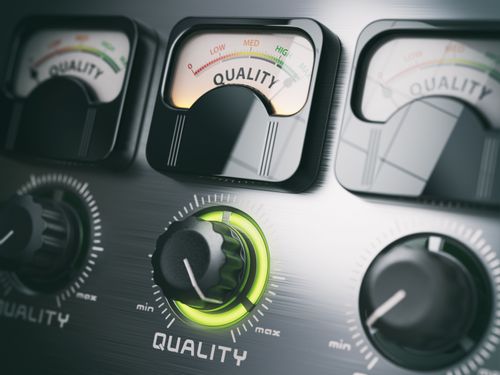
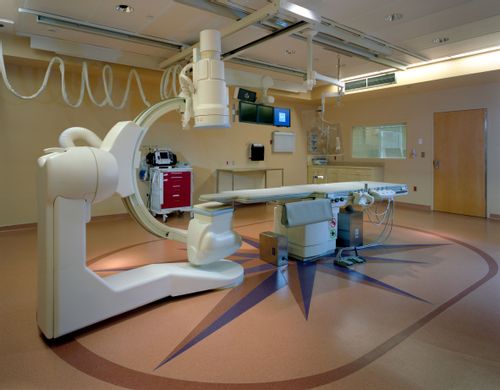
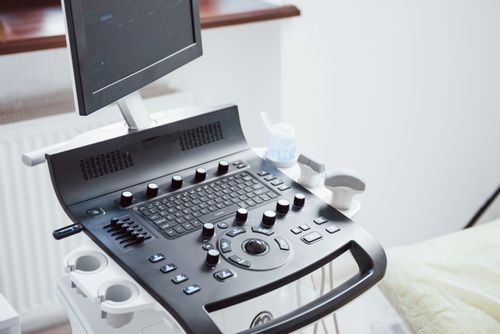
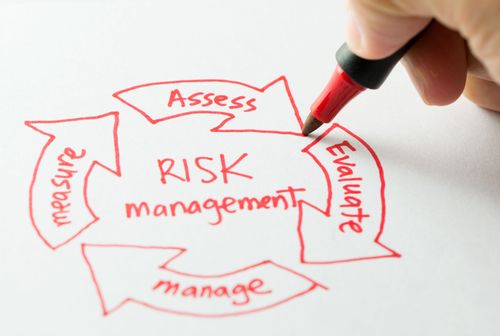
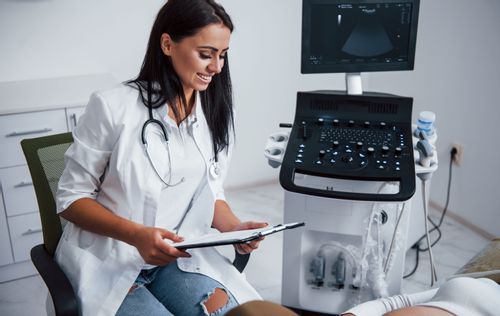


Questions, Comments and Discussion
Ask us and Technical Secretary will try to provide an answer. You can facilitate discussion about the standard in here.